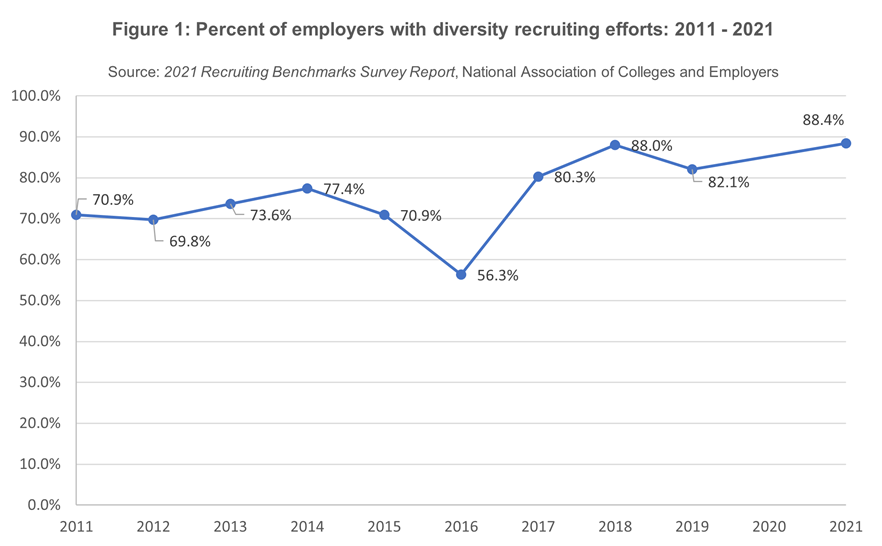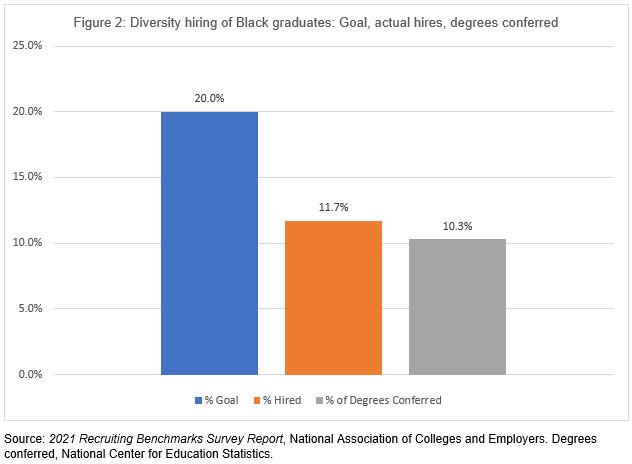Diversity recruiting has reached its highest percent level to date as 88.4% of employers responding to NACE’s 2021 Recruiting Benchmarks Survey indicated they have formal diversity recruiting efforts in place.
The increase in formal diversity recruiting efforts reported continues the growth—and recovery—in this area over the last decade. More specifically, since 2016, when the percentage of employers with formal diversity recruiting efforts dropped sharply to just 56.3%, it has climbed by 32.1%.
It is evident that—fueled by greater awareness of and focus on addressing racial injustice—employers have made stronger, more meaningful commitments to diversity, equity, and inclusion. In fact, NACE’s NACE September 2021 Quick Poll: Racial Injustice Follow Up found that:
- Over the year prior to the poll, two-thirds of URR functions allocated more funds and resources to recruit specifically under-recruited/historically marginalized candidates; and
- Employers reported significant efforts to diversify their workforces, specifically noting gains in sourcing, recruiting, and hiring.
Although employers recruited new college hires from several underrepresented groups—Asian-Americans, multi-racial Americans, and LGBTQ+—above their intended goal, they had set a hiring goal of 20% for Black college graduates, but fell short at 11.7%. This disparity has been reported over the last several years, and may be partly explained by the smaller percentage of Black students overall.
The most recent data from the National Center of Education Statistics found that, of the degrees conferred to U.S. citizens and permanent residents in 2018-19, 10.3% were to Black graduates, a percentage that has ranged between 9.8% and 10.8% since 2004-05. Meanwhile, the employer hiring goal for Black college recruits reported by NACE has increased over time.
Other explanations for the disparity between the goal and the actual hiring percentage likely include the complex challenges of recruiting for diversity, which NACE is currently investigating with a mixed methods approach.
Data from the 2021 Recruiting Benchmarks Survey Reportwere collected on June 7, 2021, until August 6, 2021. Responses reflect recruiting results for the Class of 2020. The survey was distributed to organizations holding NACE membership as well as nonmembers. In all, 186 NACE members responded, representing 22.3% of all eligible member respondents. An additional 27 responses were received from nonmember companies. The 2021 Recruiting Benchmarks Survey Report and its interactive dashboard are available to participants on NACEWeb. Those who did not participate can access an executive summary or purchase the report through NACE.





